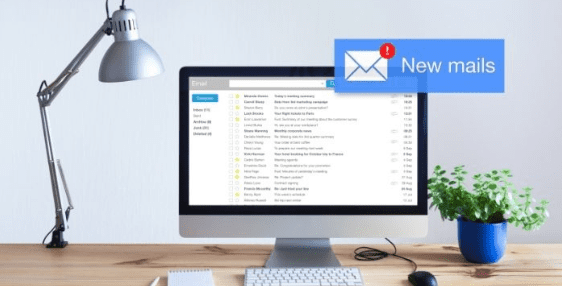We have created a comprehensive guide to setting up and delivering successful and compliant email marketing campaigns based on current best practices.
It focuses on the most crucial aspects of your email campaign and does not assume you have any previous experience, offering insights for beginners and those with more advanced skills.
This article is an excerpt from the full guide and deals with the all-important subject of Email deliverability.
MAXIMISING EMAIL DELIVERABILITY
By following our Email Marketing Guide, you’ll be well on the way to creating email campaigns with high impact designs, great content and enticing subject lines.
But, after so much hard work how do you ensure your email gets to the inbox of your contacts?
Unfortunately, the rise in spam and phishing emails means that even ethical marketers now must navigate the various automatic spam filters.
These filters are on the receiving email systems, and they determine if your content is safe and worthy of being delivered to their intended recipient!
Another deliverability consideration is the validity and accuracy of the recipients’ email addresses in your list.
There are four essential steps you must take to maximise the deliverability of your emails:
- Choose a unique email sending domain or sub-domain
- Add email domain verification
- Email address validation of your contact list
- List warming
The set-up of the unique email sending domain and email domain verification is only carried out once. So too is the list warming.
However, Email Address Validation should be carried out prior to every email campaign you send.
The following sections explain these processes in more detail
1. EMAIL SENDING DOMAIN
When you send your day-to-day emails, they will likely be sent from your organisation’s domain (mycompany.com) or a sub-domain (email.mycompany.com, sales.mycompany.com etc).
Because you’re not sending mass emails from these domain/sub-domains (or you shouldn’t be!), there is very little risk of them being blacklisted.
However, there is always a risk of being blacklisted when you send bulk emails.
That risk will increase with the size of your list, particularly if your email data is low quality (see email address validation later).
Creating a unique sending domain or sub-domain that is reserved for your email campaigns means any issues that arise from sending bulk emails will not affect your corporate communications.
As an example, a unique sending sub-domain might be send.yourcompany.com (assuming that sub-domain, ‘send’, is not being used in any other part of your organisation).
Alternatively, you could choose a Top-Level Domain (TLD) that your organisation is not using, however, be sure it reflects your organisation’s brand.
Once you have chosen your unique sending domain for your email campaigns, you’re ready to set-up email domain verification.
2. EMAIL DOMAIN VERIFICATION
When using a 3rd-party Email Service Provider (ESP), your email is being sent via their email servers.
This makes it difficult for a receiving server to determine if your email is really being sent by your organisation or by a spammer.
With a reputable ESP, their sending domains/ IP addresses should be whitelisted and so more likely to be accepted by receiving email servers even without email domain verification in place.
However, a spammer could still create an account with an ESP and send emails that look like they’re from your organisation.
Therefore, some receiving email-servers will treat unverified domains with suspicion.
Verification attempts to increase the confidence of the receiving email server that a) the email really is from your organisation and b) the content of your email has not been intercepted and changed after your sent it.
So, how do you verify your emails and email domain? With SPF, DKIM and DMARC! Don’t worry, we’ll explain what that means next…
- SPF stands for Sender Policy Framework. It’s a method for authorising your ESP to send email on your behalf.
- DKIM stands for DomainKeys Identified Mail which ensures your email has not been altered after it was sent.
- DMARC stands for Domain-based Message Authentication, Reporting and Conformance. Effectively this ties SPF and DKIM together. It provides a reporting mechanism back to the recipient’s receiving email server telling it what to do with the email if it is considered suspicious. Not something a spammer would implement, which is why it improves confidence that the email is from a reputable source.
Your ESP will have tools to help you generate SPF, DKIM and DMARC records.
These are then added to your email-domain configuration DNS2 – this will usually require support from your IT department to set-up if you don’t have the technical skills.
Once SPF, DKIM and DMARC are set-up, a receiving email server can look-up these records every time an email is received from your organisation via your Email Service Provider (ESP); the server will be confident the ESP is authorised by your organisation to send these emails on your behalf and that they have not been altered.
A useful tool for monitoring your sender reputation is Send Forensics.
The other benefit of email domain verification is that the recipient won’t see a reference to the email having been sent by your ESP e.g. the sender displayed as ‘yourESP on behalf of yourOrganisation’.
Not only does that look better to the recipient, but it should also uplift open and click-through rates as their confidence will be higher that it’s a genuine email sent by your organisation.
3. EMAIL ADDRESS VALIDATION
The email addresses in your list may be malformed (data-entry error or spam) or even non-existent.
For example, if a contact has gone away, web forms being submitted maliciously by a bot, or website visitors that didn’t want to leave their real email address to download your latest whitepaper!
A large number of inaccurate or invalid emails will increase your email sending costs (based on list size) and may damage your sender reputation.
This is because a high number of bounces (invalid, undeliverable emails) may be considered as spam.
For these reasons, the cleansing of your email lists should be as important to your organisation as the cleansing of your contacts’ postal addresses.
Email Address Validation, such as the service provided by Hopewiser, analyses each email address in your list and returns a report detailing which emails are deliverable, unconfirmed, unverifiable, disposable, undeliverable and harmful. All without sending any emails.
Once your list has been validated, you can be confident that your emails are being sent to active and verified email addresses.
4. LIST WARMING
List warming is essential to improve your sender reputation, particularly when using a new sending domain or ESP.
It’s an approach whereby you gradually increase the volume of emails you send with a specific focus on high engaging segments of your list i.e. contacts who are more likely to open and click your emails, and less likely to mark them as spam.
Start with small segments of 50 or so contacts per campaign and gradually increase the segment size over a period of about 2-4 weeks.
During the warming phase you should be aiming for open rates of 20% to 30% and certainly no less than 15%.
Typically, high engagement segments to include in the warming phase are:
• Recent web leads
• Customers
• Active website users in the past 30-days or so
• If you have an ecommerce business with marketing automation, switch on automated flows for your welcome series, abandoned cart and browse abandon.
THERE’S MORE…
Email deliverability is a vital element of any email marketing campaign, but there is so much more in our full guide to Email Marketing.
It includes sections on Content Creation, List Management, Testing & Sending, Measuring Campaign Performance, and GDPR/Privacy Considerations.
PLUS, Email Address Validation, such as the service provided by Hopewiser, analyses each email address in your list and returns a report detailing which emails are deliverable, unconfirmed, unverifiable, disposable, undeliverable and harmful.
All without sending any emails. Once your list has been validated, you can be confident that your emails are being sent to active and verified email addresses.
, updated 4th June 2025.
Topic: Email Validation






